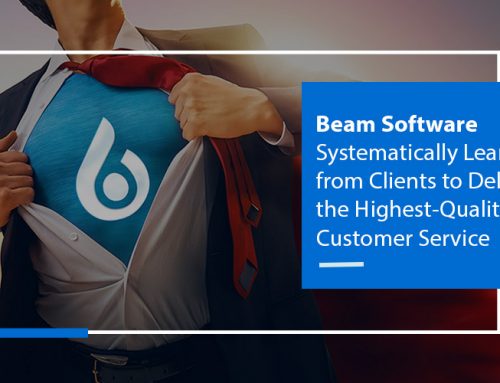Implementing new technology and converting between systems can be an overwhelming undertaking for businesses and their employees. As daunting as that task may seem, the pressing need to stay current with evolving technology, consumer communication preferences, and changing legislation is essential. As the government continues to extend the laws surrounding consumer data, implementing new software may be a more immediate need than some companies realize.
Evaluating the need for a new software platform begins with auditing the performance of your existing software and asking yourself questions like what problems are we trying to solve and how much is using an outdated system affecting our bottom line? Here are five things to consider when determining the need for a new debt collection software platform:
- Is it Time to Retire Your Software?
- Compliance with Consumer Communication Preferences
- Amount of Manual Intervention
- Essential Features for Debt Collection Software
- Cost vs. Benefit
1. Is It Time to Retire Your Software?
If your company runs on older technology, has no SaaS offering, or has been given an end of life by the provider, it’s time to perform a cost vs. benefit analysis. Technology is constantly evolving. When it’s time to start exploring alternative solutions many businesses look to incorporate technology that is specific to their needs. However, as a result, they oftentimes are forced to implement a patchwork of various software products that do not integrate with one another.
While each individual application may solve an important problem, a lot of time is wasted jumping between different, non-integrated systems. Silos of information can increase duplication and the errors associated with maintaining data integrity across multiple locations.
Over time, systems slow down, break down, or simply become irrelevant. Aging systems may not work at full capacity, increasing the frequency of outages and crashes, and the loss of access to information. This can be devastating to production and results in a loss of revenue. Every minute that your agents are not actively making calls and collecting money impacts your bottom line.
2. Compliance and Consumer Communication Preferences
Consumer communication methods are continually changing with today’s technology as more and more interactions are taking place through digital channels. Is your software platform helping you to stay ahead of that curve? Are you constantly trying to find ways to accommodate your consumer’s latest communication preferences? Can your software meet compliance requirements when using those channels regarding things like opt-out functionality and call frequency? Depending on your answers, it may be time to consider converting to a platform with the tools to provide secure and compliant options that meet the needs and wants of consumers when it comes to communication.
The customer experience is very important. Your platform should provide agents tools to support easy and effective communication in a secure and compliant manner.
3.Amount of Manual Intervention
How well your current platform streamlines processes and eliminates the need for manual intervention is crucial to team performance. You should identify hard costs like extra payroll for additional man hours spent on manual processes, the cost of IT personnel required to manage your current systems and network infrastructure, and any added expense for the use of outside vendors that provide needed functionality.
Platforms that provide workflow automation can help reduce errors, improve efficiency, increase accuracy, and ultimately elevate performance. By reducing manual intervention, collection businesses can operate more efficiently, preserve data integrity and perform services more quickly.
A reputable platform should ensure you remain compliant and meet client requirements while protecting sensitive data. The ability to restrict access to personally identifiable information (PII), whitelisting IP addresses for remote personnel, and masking specific data fields will help secure consumer data.
With these components in place and time-consuming, repetitive tasks eliminated, your team can cut costs and reduce errors, while speeding up process. Companies that fail to embrace new technology and automation may risk being left behind.
4. Essential Features for Debt Collection Software
Before you begin looking at potential platforms, understand which features are essential to your business. What features do you absolutely have to have? Identify the features and functionality of your existing technology and start a list of basic requirements. What functionality is missing from your current software? Look to your outside vendors and any disparate systems for the answer. Add them to your requirements list. These are the “Must-Haves.”
Ask your colleagues what features stand out in their collection platform. Do some research. Go online to learn what kind of feature set is available on other platforms. Remember; it’s impossible to know what you don’t know. So, find out. These features should be your “Nice to Haves.”
Rank both lists in order of importance and differentiate what is truly essential as opposed to what could be considered extras or bells and whistles.
Evaluate the features of your existing software and develop general requirements and rank them in order of importance. It is important to understand how data is collected, secured, stored, and shared. Choose wisely when considering additional features while comparing platforms. Choose a product that aligns itself with your long-term strategic plan and is customizable to meet your needs.
Product support is another essential feature to evaluate. Software is sometimes only as good as the people that stand behind it. What kind of support does your potential provider offer? Are their support representatives in an offshore call center? Do you have to speak to different support staff all the time or can you have a single point of contact to promote more effective communication and faster resolution times?
Evaluate the level of support your organization is looking for. A clear understanding of a software provider’s support offering should be considered in your decision-making process.
5. Cost vs. Benefit
The highly regulated industry of debt collection requires strict adherence to compliance standards and regulatory guidelines. By remaining on your current platform, you may be forfeiting the benefits a conversion could provide. Or you could simply be putting yourself at risk of paying costs, either tangible or intangible.
Reviewing cost versus benefit helps identify a hope of gain as well as your fear of loss. For example, what is the cost of not having direct access to data for reporting or vendor integration? What kind of financial impact would a system outage without disaster recovery (DR) failover have? What are the benefits in risk mitigation and preserving your organization’s reputation if you compliantly dial mobile phones or ensure your agents do not place a telephone call to a person more than seven times within a seven-day period? New technology can help ensure compliance and increase productivity. It also can aid in completing complex tasks in a shorter period. The data, analytics, and reporting features from a software platform can help shape strategic company goals A different platform may present more revenue-generating opportunities that wouldn’t otherwise be known.
Conclusion
Converting collection software platforms can be a complicated endeavor. You should begin with the end in mind and have a vision of what your new software can do for your company. Be sure to give yourself ample time to research multiple vendors and involve different staff members in the process. Personnel affected by implementing new collection software will surely appreciate the opportunity to provide feedback. Their input will be instrumental in helping your organization make the right choice.
Follow Beam Software on Social Media! Like us on Facebook, Connect with us on LinkedIn, and Subscribe to our YouTube channel.
About Beam Software
Headquartered in Sarasota, Florida, Beam Software is a leading provider of collection and portfolio management software for creditors, debt buyers, and collection agencies. We help our clients improve the effectiveness of their ARM processes and increase collection revenue through their implementation of BEAM, our collection software platform.






